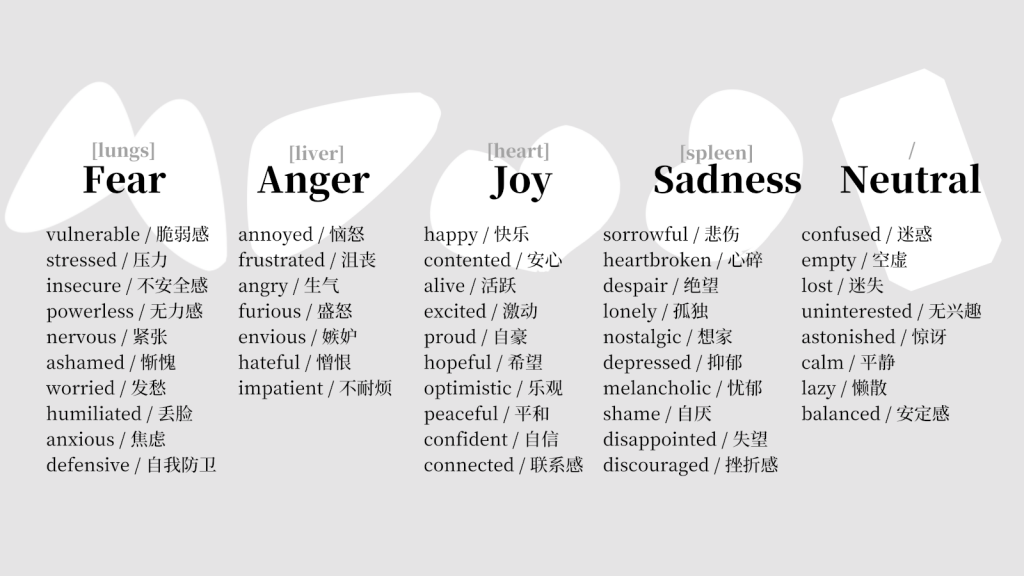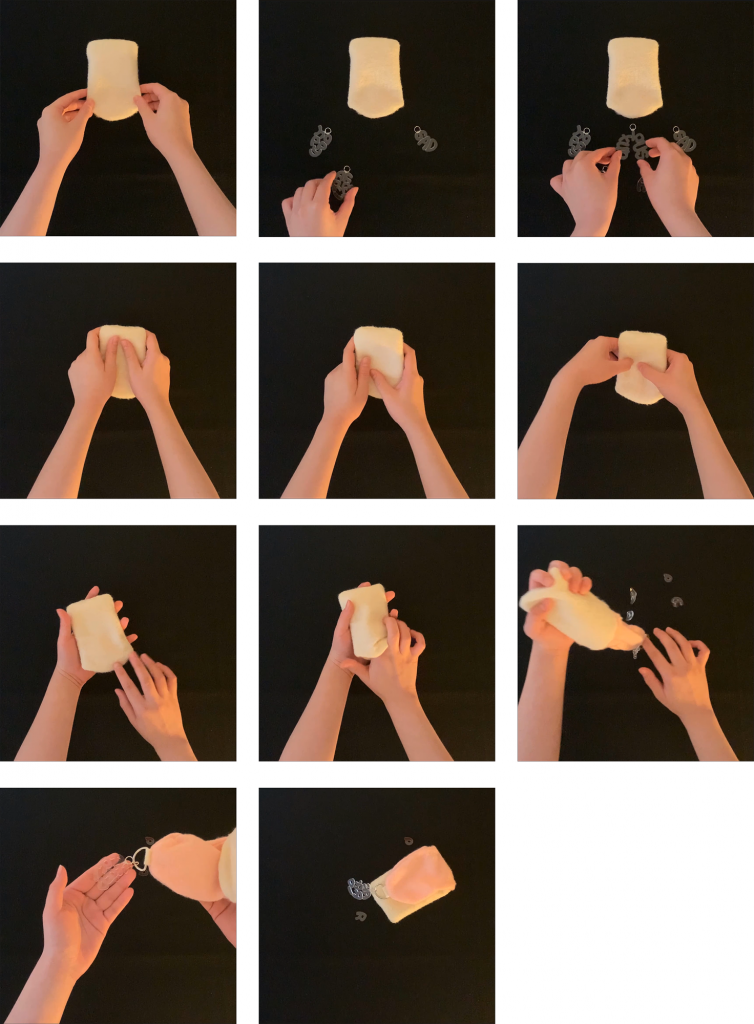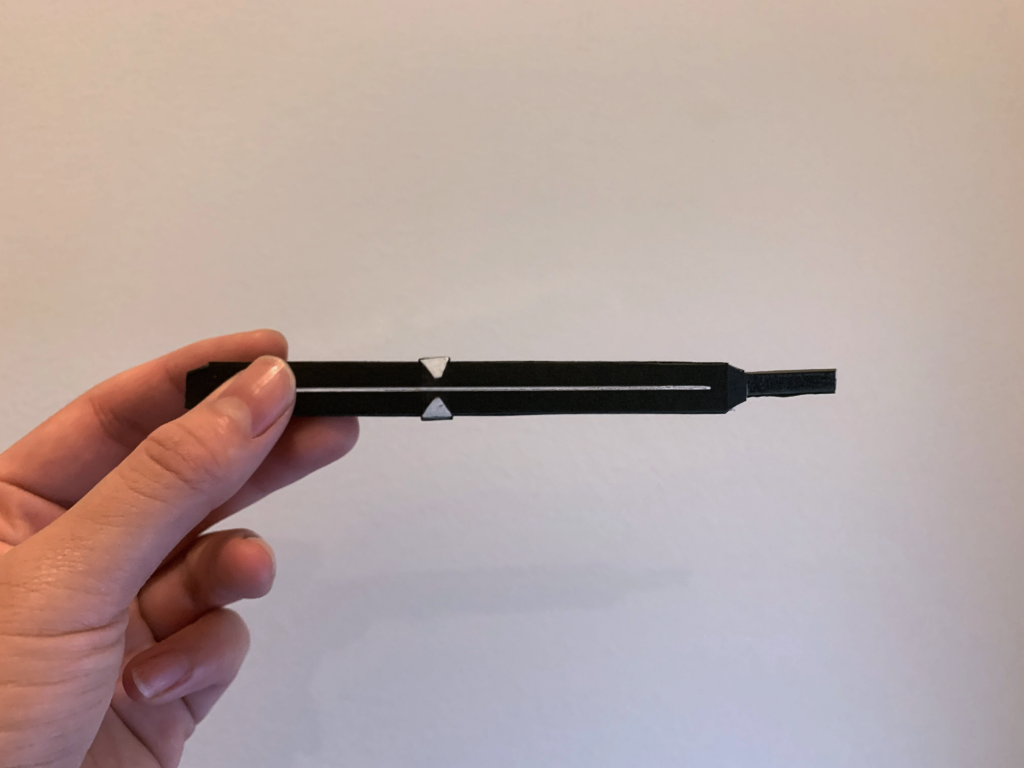The Flesh Talk: An exploration of mental health stigma in Chinese culture
Qinya(Aria) Chen
The beginning of inquiries: personal conversations
One winter day in 2018, I crouched beside a fridge on the balcony of our studio – to hide from the sight of my peers working in the rest of the apartment – and picked up a phone call from my closest friend’s family. At that point, my friend Z had been absent from our school for a month, due to depression.
They wanted her friend to cheer her up a little bit and bring her back to the college, to finish the degree. I kept silent for a moment and finally told them that I had tried. Z had cut herself from any communication for quite a while, and I was out of methods.
“You may try to convince her to align with the others,” said her parent desperately, “if everybody could overcome the same stress, why couldn’t she?”
Another day, I leaned against that fridge again and answered a call from my mother. As my graduation neared and things began to bustle, she worried about me a lot.
As soon as she knew that someone close with me was struggling with serious depression, she was frightened.
“Stay away from that one,” her voice got intense, but softened only a second later. “Don’t get influenced by her. I knew you are not that vulnerable.” (personal communications, 2018)

I remembered having complex feelings about how much this person cared about my mental state but still described it as“ flawed in personality”. This is an example of stigma I encountered in daily conversations.
Unresolved discussions and harsh voices like this motivated me to embark on a research project about mental health. At first, I was angry with the way people judged my friend. I believe that having mental problems is neither something to be blamed for, or something to be afraid of.
I wanted to know why and how people talk about mental illness with fear. Fear contributes to the creation of negative stigma about mental illness. I wondered if there was any element of stigma that was specific to my culture. And most importantly, as a designer, what can I do about this kind of stigma?
How might discursive artifacts open the discourse around mental and emotional distress in Chinese culture?
Can discursive artifacts challenge the somatized language used in Chinese culture, to lead to a more open conversation about emotions and mental health?
Context Framing: mental well-being, stigma theories and cultural discourses
The focus of inquiry in this research is stigma around mental distress, with particular attention to somatization of symptoms. Mental well-being is understood as a continuous spectrum, with healthy on one end and diagnosed mental illness on the other end. States of mind like stress and anxiety are located in the middle of the spectrum. Individuals may perceive and manage their mental well-being in different ways.
When the evaluation of one’s negative behaviors is matched with stereotypical understandings of mental illness, the stigmatization appears. Stigma has different origins and forms in different cultures. There is no universally agreed theory to explain its origin.
The band stands for the identity of a patient with mental illness. As I walked around with this object dangling from me, others immediately noticed it. It restrained my limbs, so I had to stop and adjust a few times during that period, and kept noticing its existence.
Later, during our Fall 2019’s Open Studio, I was lucky enough to have a short conversation with a therapist. One point extracted from the talk is, many people suffering from mental health problems are stigmatized by themselves. They can’t accept the negative dimension of their inner world and struggle to reach the absolute standard of “healthy” throughout their life.
After this conversation, I made a change to the object in the following week. I cut it into shorter sections and folded each section into a more decorative shape inspired by some childhood origami techniques that came to my mind. This allowed it to keep the original look of the band with minimal trimming. I wore it again during the final peer review section.
I focus on some Chinese cultural perspectives about mental well-being and develop my research in this area. On a general societal level, Chinese education and family values are largely shaped by the philosophy of harmony, which explains people as a relational being in a connected society. On the individual level, ancient Chinese medical theories believed that good psychological/mental conditions came from harmonious balance among different body parts. Within this cultural context, somatization is not only a medical phenomenon but also reinforces stigmatization. By somatizing any mental distress in physical language, Chinese people attempt to avoid being stigmatized.
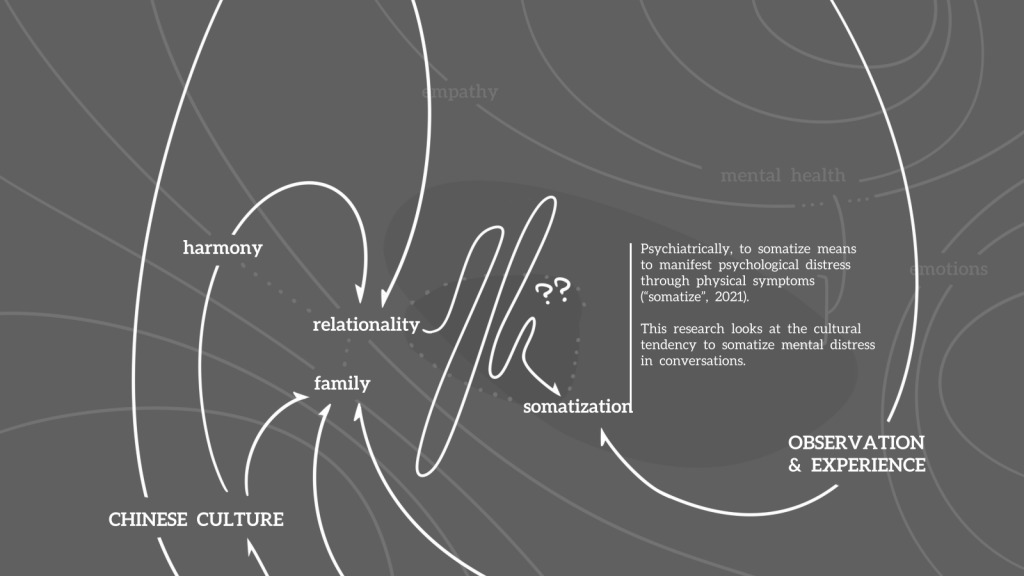
The methods used in this research include mapping, drawing, journaling, writing in different styles, and iterative designs of physical objects. I took time to specify the scenarios of the objects and locate the scenarios in cultural contexts such as relationality and somatization. I worked around the cluster of my several research keywords and jumped back and forth in this process, in the hope that some of the uncertainties I encountered could become new resources to shift or de-stigmatize the discourse around mental illness.
Outcomes: discursive scenarios, prototypes and sketches
Scenario#1: The Neuro / Shenjing
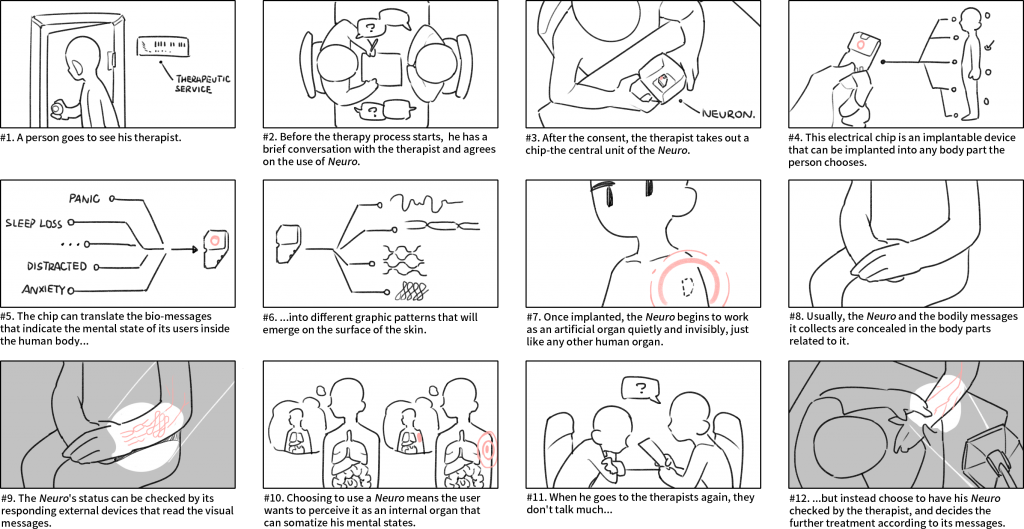
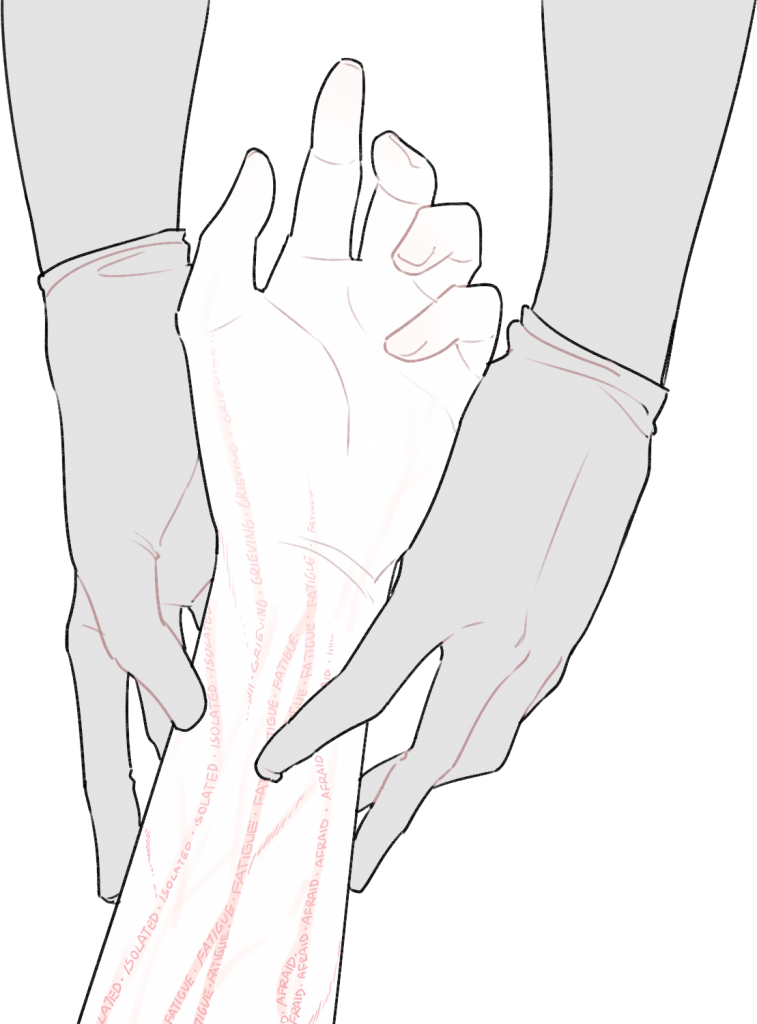
Neuro is a speculative implantable device that simulates an organ of a human body. It consists of an electronic chip as the central unit for delivering visual messages and an external device for interpreting the visual messages. When using Neuro, the user and the therapist both know that the user has obtained an artificial organ named “Neuro” (Shen Jing), that can manifest somatized information about the user’s mental states.
The chip can be implanted into any body part the user chooses. The chip can create a series of blood-vessel -like visual patterns on the surface of that body part. These patterns are called Neuro (Shen Jing in Mandarin Chinese) and are triggered by the biological messages, that are normally somatized inside the user’s body. The user’s general psychological condition is easily interpreted.
Scenario#2: The Flesh Talk / Feifu
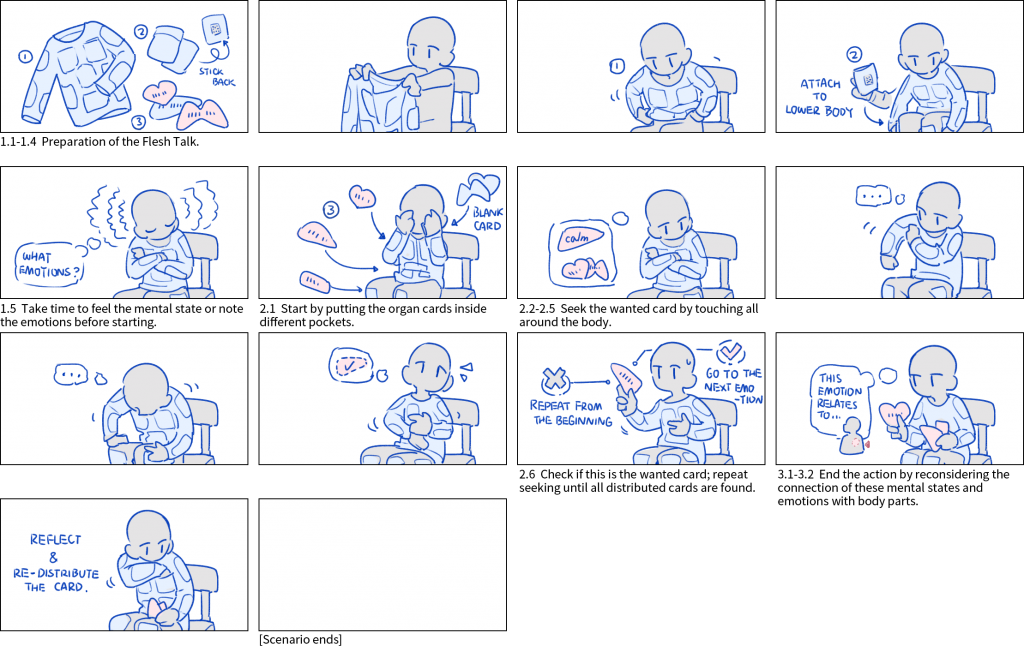
The Flesh Talk consists of a set of cards and a piece of clothing with multiple pockets distributed around the body. The outline of the card resembles the outline of the plane figure of a human organ. A descriptive word about an emotion or mental state is written on one side of the card.
The scenario starts with someone trying to describe his or her psychological/mental state. In the beginning, the cards are randomly distributed into different pockets. Some of the pockets may hold no card in them, and some may have multiple cards, so one needs to make an effortful search around the whole body to search for cards with his or her desired description.
Search for the content all along the body is an attempt to translate the somatized expression of mental or emotional distress into a bodily experience. When the mental status becomes somatized by the speaker’s socio-cultural environment, it can be difficult to self-express effectively in therapeutic communication. The speaker has to search through the body but has no guarantee of getting a desirable result.
Scenario#3: The Cardimeter
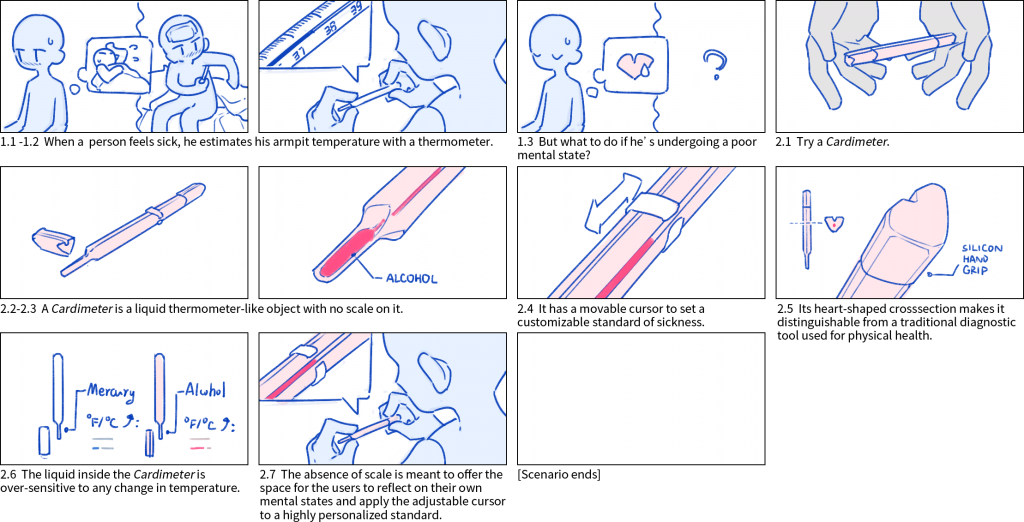
Cardimeter is a thermometer-like object with a cordiform cross-section. The meter has no scale but features a moveable cursor that can be adjusted according to personal needs.
A Cardimeter is used during introspection or reflection about a personal mental state. It provides a customized diagnosis for its user. It is used like a liquid thermometer that would read oral temperature or armpit temperature, but it has no scales. The only indicator on it is the cursor set by the user.
I depicted three discursive scenarios that probe beneath the surface of physical symptoms in daily conversations and therapeutic situations. These are speculative works aiming at inviting the readers or audiences to have more open conversations about mental well-being and distress. This acts as a strategy to reduce culturally specific stigmatization.
I also hope that what I practiced in this thesis project could be the starting
point for further investigation around design’s role in de-stigmatizing mental illness.





